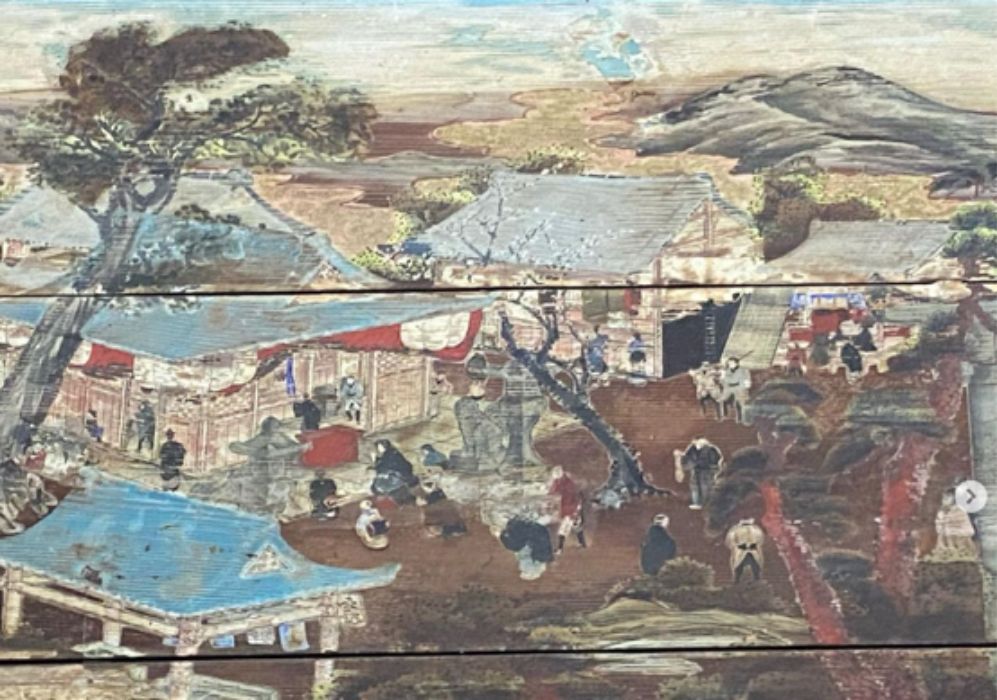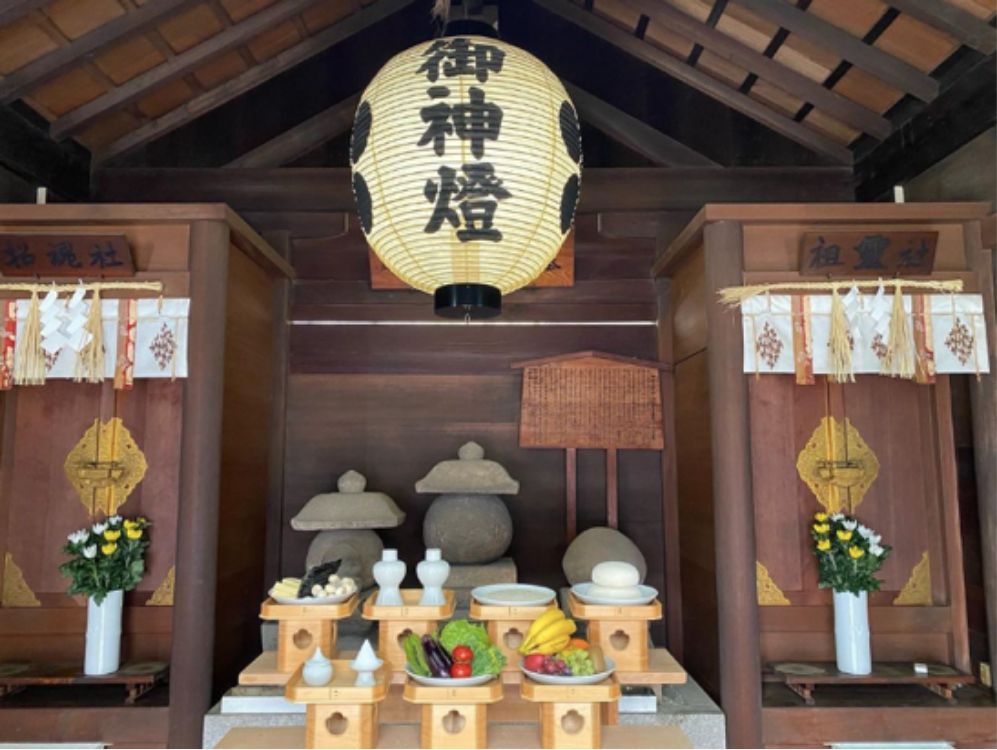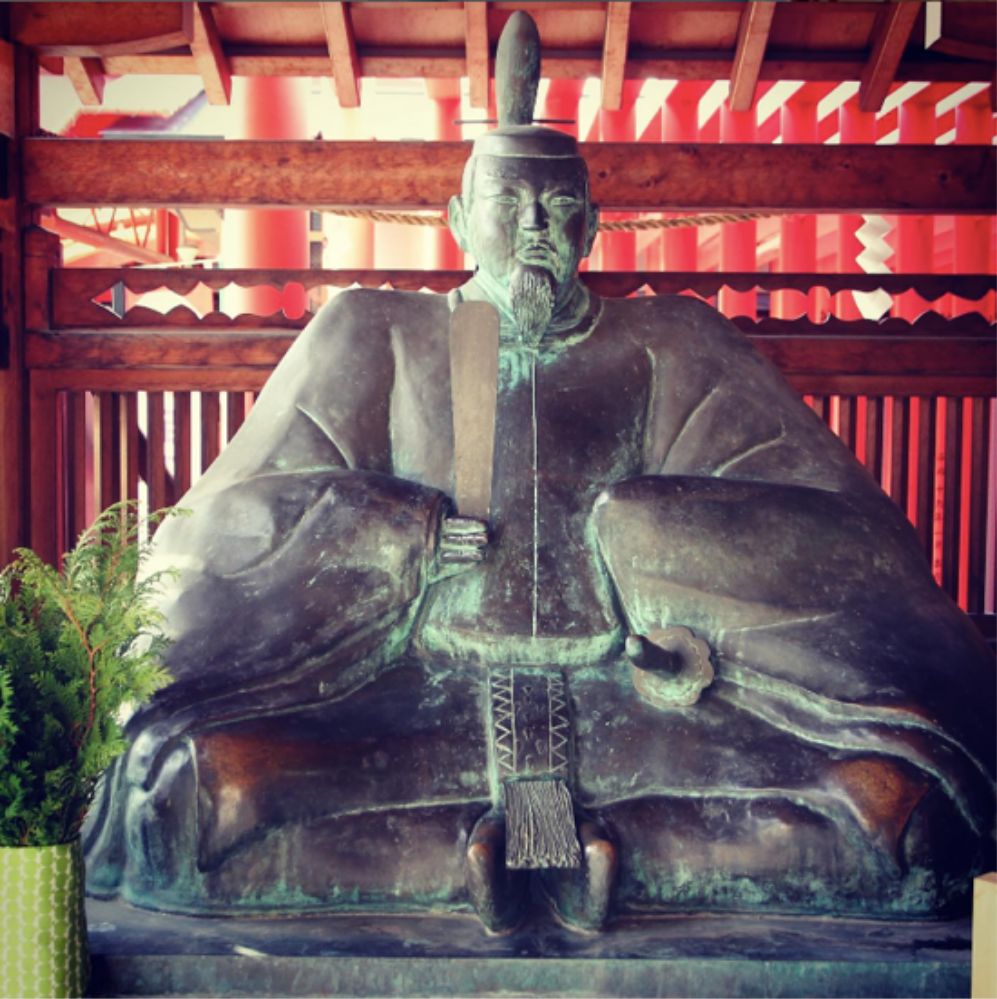
Hattori Tenjingu is a Shinto shrine known to cure leg and foot ailments. Although the exact founding date of the shrine is unknown, the shrine can be traced to the arrival of the Hata clan. The Hata Clan were appointed as textile manufacturers (Oribeshi) by the Emperor Ingyo (412-435). They set up their headquarters in Hattori village in Osaka near a small pre-existing shrine and established a small sanctuary to Sukunahikona, the divinity of medicine.
In 901, Sugawara Michizane was on his way to his new post in Fukuoka. Partway at Hattori, he could no longer walk due to a leg ailment. Villagers recommended he visit the small sanctuary to Sukunahikonna in order to cure him.

When he visited the small sanctuary, he caught sight of a nearby sacred stone marker. He realized that the sacred stone was the sanctuary of Fujiwara Uona (721-783 Aristocrat and Statesman) who died there due to a similar leg injury. He prayed for the recovery of his leg and paid deep respect to the divinity of Fujiwara Uona.
His leg gradually recovered and he left Hattori and arrived safely at Dazaifu, Fukuoka.

After his death in 903, the Tenjin faith (which pays deep respect to Sugawara Michizane as a divinity) spread all over the country. Villagers brought the divinity of Sugawara Michizane and set up the “Hattori Tenjingu Shrine”. The reputation of Hattori Tenjingu Shrine grew during the Edo period and has kept up to the present day.